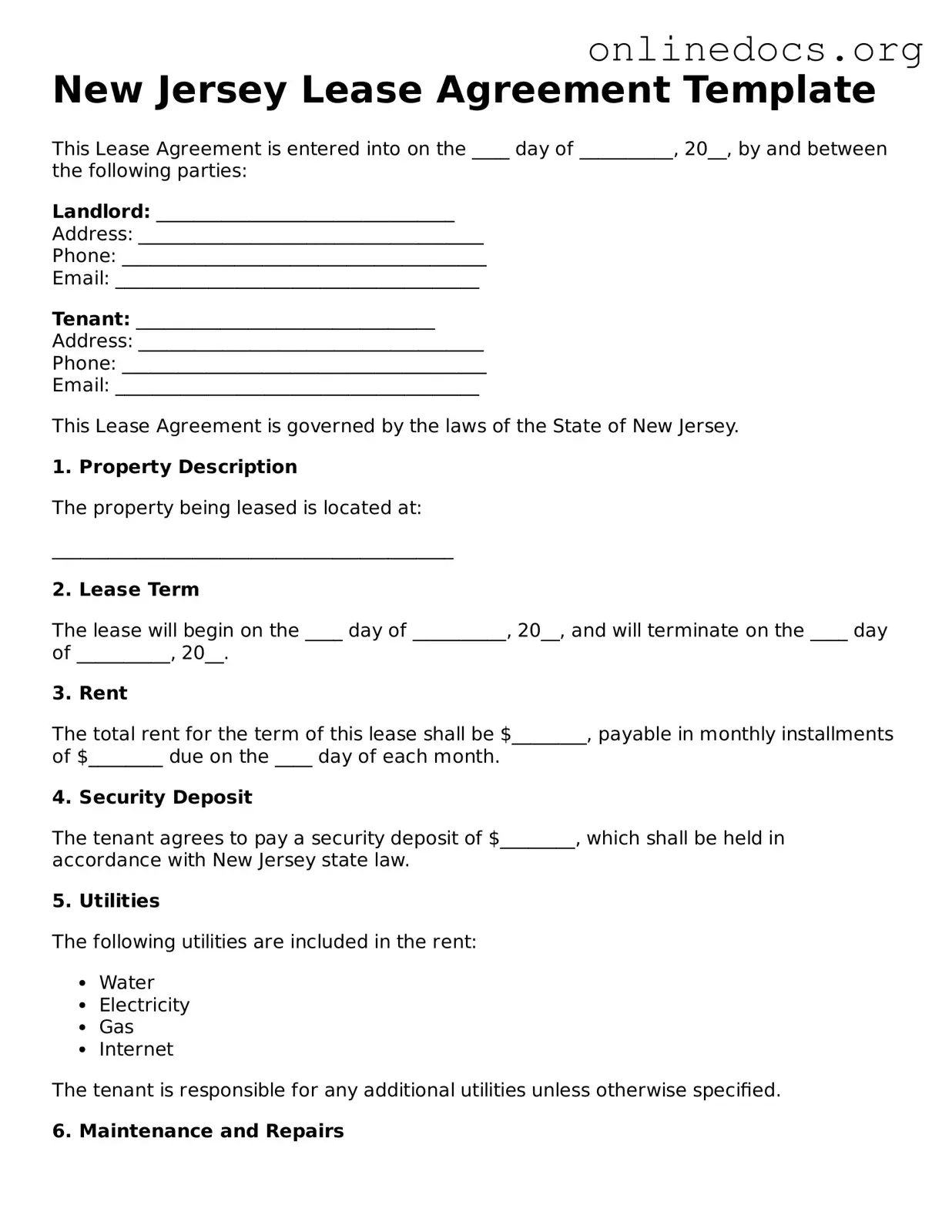The New Jersey Lease Agreement is similar to the Residential Lease Agreement, which is commonly used across various states. Both documents outline the terms and conditions under which a landlord rents out property to a tenant. They typically include details such as the duration of the lease, rental payment amounts, and responsibilities for maintenance. The primary goal of both agreements is to protect the rights of both parties while ensuring a clear understanding of expectations and obligations.
Another document that shares similarities with the New Jersey Lease Agreement is the Commercial Lease Agreement. This type of lease is specifically tailored for business properties, but like the residential version, it details the terms of occupancy, rent, and maintenance responsibilities. Commercial leases often include additional clauses related to business operations, signage, and zoning regulations, which are not typically found in residential leases.
The Month-to-Month Rental Agreement is also akin to the New Jersey Lease Agreement. This document allows for a more flexible rental arrangement, where either party can terminate the lease with short notice. Both agreements detail rental amounts and responsibilities, but the month-to-month format is more adaptable to changing circumstances, making it appealing for tenants who may not want a long-term commitment.
Similar to the New Jersey Lease Agreement is the Sublease Agreement. This document is used when a tenant wishes to rent out part or all of their leased property to another party. It must align with the original lease terms, ensuring that the primary landlord’s rights are not violated. Both agreements emphasize the importance of consent and responsibilities, although the sublease introduces additional layers of complexity regarding tenant relationships.
The Room Rental Agreement is another document that resembles the New Jersey Lease Agreement. This type of agreement is specifically designed for situations where an individual rents out a room in their home. It covers aspects such as rent, utilities, and shared spaces. Like the New Jersey Lease Agreement, it aims to protect both the landlord and tenant while clarifying expectations for living arrangements.
The Lease Option Agreement is similar as well, providing tenants with the option to purchase the property at a later date. This document outlines the terms of the lease and the conditions under which the tenant can buy the property. Both agreements require clear communication of terms, but the lease option introduces a potential future sale, adding an extra layer of negotiation and planning.
The Rent-to-Own Agreement also shares characteristics with the New Jersey Lease Agreement. This document allows tenants to rent a property with the intention of purchasing it after a specified period. Like the lease agreement, it includes terms related to rent and maintenance but focuses more on the eventual transfer of ownership. Both documents aim to establish clear expectations and protect the rights of all parties involved.
The Standard Lease Agreement is yet another document that is similar to the New Jersey Lease Agreement. It serves as a template for rental agreements in various states, providing a general framework for landlords and tenants. Both agreements include essential components such as rental terms, payment schedules, and maintenance responsibilities, ensuring that both parties understand their obligations.
For a comprehensive understanding of your hiring process, consider utilizing the Employment Verification form, which can help you confirm candidates' employment history accurately. You can find more information on how to efficiently fill out this form through this Employment Verification resource.
Lastly, the Fixed-Term Lease Agreement is comparable to the New Jersey Lease Agreement. This document specifies a set rental period, usually lasting from six months to a year. Like the New Jersey Lease Agreement, it outlines rent amounts, maintenance duties, and other essential terms. The fixed duration provides stability for both landlords and tenants, making it a popular choice for long-term rentals.
